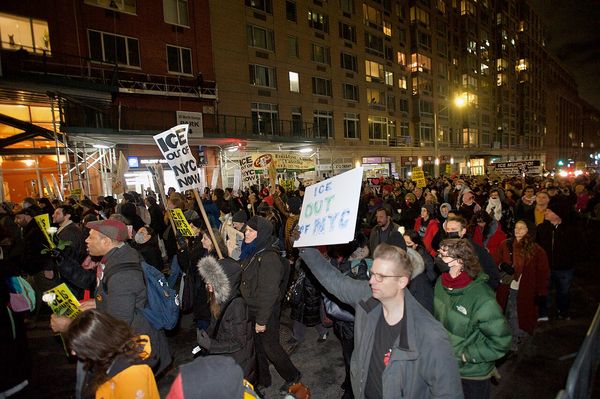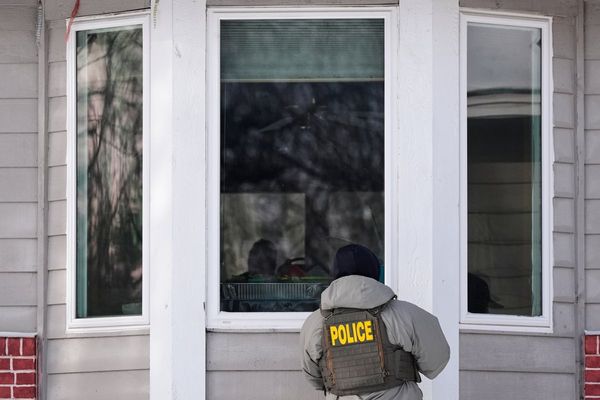NASHVILLE, Tenn. – SEC commissioner Greg Sankey has often been called the most powerful person in college athletics. (It’s an honorific he has tried to deflect, describing himself as influential more than powerful.)
Monday, as he kicked off SEC Media Days at the Grand Hyatt Nashville, he flexed again, announcing at the start of his remarks that he was going off script to announce that he and his wife Cathy had become first-time grandparents last week.
Brazen.
Later on, he attempted to wield his influence in a more conventional manner, calling on Congress to create legislation to create a framework for college athletes’ compensation for their name, image and likeness rights.
It’s not the first time he has made his please, and it’s been a concerted effort among college sports administrators, as NIL chaos become a defining element of college athletics in the past two years since the NCAA gave athletes the right to be compensated for their NIL rights. In June, for instance, a delegation of SEC coaches and administrators traveled to Washington to meet with lawmakers to make their case for Congress to step in and pass legislation to gain control of the unruly NIL marketplace. . The NCAA’s new president, Charlie Baker, was hired in no small part because of his political background (he was formerly governor of Massachusetts).
“The reality is only Congress can fully address the challenges facing college athletics,” Sankey said. “The NCAA cannot fix all of these issues. The courts cannot resolve all of these issues. The states cannot resolve all of these issues, nor can the conferences.”
It raises the question – if it’s so important to the NCAA, why is it only that the Congress can fix the problem?
And here’s the answer – because a big item on their wish list is an antitrust exemption and a pathway to regulating NIL compensation. And the problem with an antitrust exemption is that the NCAA has already lost in court in its attempt to restrict compensation to athletes and would almost certainly lose again.
And even if Congress were to enact laws creating a structure in which NIL deals have to be reported to a clearinghouse (another element of the NCAA wish list), who’s to say that a class-action lawsuit representing college athletes wouldn’t defeat those laws, too? (Here’s an example of why: If professional athletes don’t have to reveal the value of their endorsement deals, why should college athletes?)
But here, there may even be a limit to even Sankey’s influence. It doesn’t appear that Congress has a great appetite for taking this on. And, really, why should this be a problem for Congress to solve? Aren’t there, maybe, other, bigger issues that need resolution?
Sankey and others have framed their seeking Congressional intervention as an effort to protect athletes. Certainly, there’s an element to that. There are people (agents, primarily) preying on athletes, making promises they can’t deliver on and signing them to contracts that give away their NIL rights even beyond their college careers.
But, surely, there’s more to it than that.
And another problem for the NCAA and those seeking Congressional assistance – even if lawmakers did pass legislation, there’s no telling that it would even be to the NCAA’s liking. Senator Chris Murphy (D-Connecticut), among the more outspoken legislators in the NIL realm, called for the NCAA to recognize athletes for what many would say they already are – employees – and engage in collective bargaining, as professional sports leagues do with players unions. That would be just about the polar opposite of what the NCAA wants, for college athletes to gain access to more of the billion-dollar industry that is college sports.
In his plea to have Congress rescue the NCAA, among his talking points was that this was a non-partisan issue because college athletics produces so many U.S. Olympic athletes. It’s true, but let’s not divert Congress’ attention to NIL in order to win Olympic gold.
“Whether Congressional action is achievable is a matter of debate, much debate,” Sankey said, quite accurately.
There are undoubtedly myriad problems with how NIL is working out, which in many respects is not how it was unintended to work. Where the idea was that athletes could be compensated in deals for autograph signings, camps or the local pizzeria, football and basketball players are getting compensated by booster-funded collectives in six- and seven-figure deals that have become recruiting inducements.
It’s hard to know what the solution is. It seems like the final destination for football and men’s basketball is collective bargaining, sooner or later. And that will bring about its own concerns, including a likely negative impact on non-revenue sports.
It may be unseemly for many fans, a total departure from what college spots once was, but the horse is galloping away from the barn.
And maybe not even Greg Sankey, the influential first-time grandpa, can catch it.







